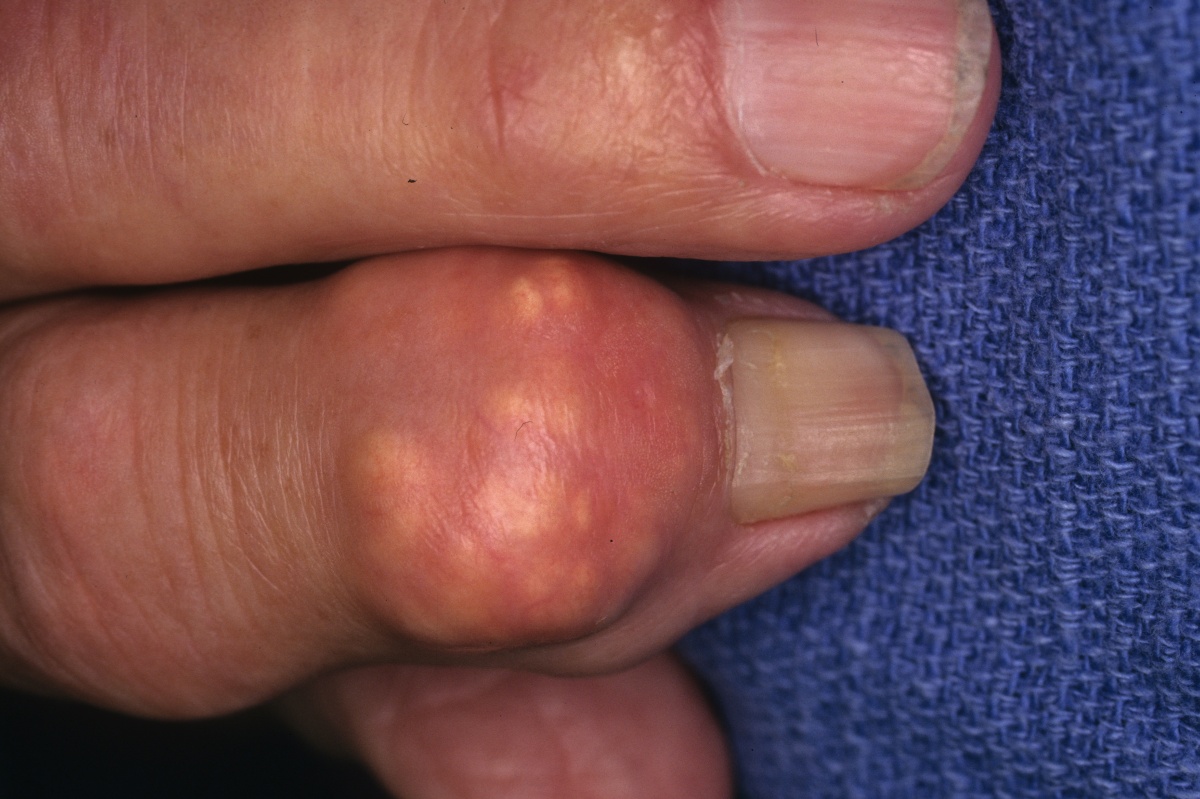1. Definition
- Gout is a form of arthritis caused by the accumulation of uric acid crystals in and around joints. These needle-like crystals trigger inflammation and can cause long-term joint damage
- Gout affects a single joint in 90% of cases, with the most common presentation being sudden, intense pain, swelling, and redness in the great toe (metatarsophalangeal joint)
- It can also affect other joints like the ankles, knees, wrists, and fingers.
2. Epidemiology
- Gender prevalence: Gout is more common in men, but postmenopausal women are at increased risk due to hormonal changes that affect urate metabolism
- Age group: Gout typically presents in middle-aged adults but can occur in younger individuals.
3. Risk factors
- Diet: High intake of purine-rich foods (e.g. red meat, seafood) and sugary drinks.
- Alcohol: Especially beer, which increases uric acid levels.
- Family history: Gout has a genetic component.
- Obesity: Excess weight increases urate production.
- Medical conditions: Hypertension, chronic kidney disease (CKD), and diabetes are linked to gout.
- Medications: Diuretics, low-dose aspirin, and ciclosporin can raise urate levels.
4. Causes
- Gout is caused by high levels of uric acid (urate), a waste product formed from the breakdown of purines, which are found in certain foods and body cells
- Normally, uric acid is dissolved in the blood and excreted via the kidneys into the urine
- Certain medications, such as diuretics, low-dose aspirin, and ciclosporin, can increase urate levels. However, these drugs should not be discontinued without consulting a doctor
- Rare genetic disorders like Kelley-Seegmiller syndrome or Lesch-Nyhan syndrome can also cause gout.
5. Symptoms
The initial gout flare is typically monarticular, affecting one joint, often the big toe. Symptoms include:
- Severe joint pain (often at night).
- Swelling and redness of the affected joint.
- Heat at the site of inflammation.

Classic gout in the big toe
Flares usually last 1-2 weeks, but over time, untreated gout can lead to more frequent and prolonged episodes.
Chronic gout: Without treatment, gout can become chronic, resulting in joint damage and the formation of tophi – large deposits of urate crystals that create lumps under the skin.
6. Diagnosis
In cases of classical gout, diagnosis can often be made based on clinical history and examination. If uncertain, additional tests may be required:
- Joint aspiration: Examination of fluid from the affected joint can confirm the presence of urate crystals
- Imaging: X-rays or ultrasounds can detect joint damage or urate crystals
- Blood tests: Serum urate levels can be measured (normal ranges: 200-430 umol/L in males, 140-360 umol/L in females).
Note: Urate levels can be normal during an acute attack, and some individuals with high urate levels never develop gout.
7. Treatment
Treatment is aimed at reducing pain during acute attacks and preventing future episodes by lowering urate levels.
- Acute attack management
- Nonsteroidal anti-inflammatory drugs (NSAIDs)
- Colchicine (especially if NSAIDs are contraindicated)
- Corticosteroids (oral or intra-articular).
- Long-term management
- Urate-lowering therapy (ULT) to prevent flares and tophi formation. Common medications include:
- Allopurinol.
- Febuxostat.
- Urate-lowering therapy (ULT) to prevent flares and tophi formation. Common medications include:
8. Complications
- Chronic arthritis: Severe joint damage and deformities.
- Kidney stones: Urate crystals can accumulate in the kidneys, forming stones.
- Tophi: Painful urate lumps under the skin, often in the fingers, ears, or elbows.
- Cardiovascular risk: Gout increases the risk of cardiovascular disease and related mortality.
- Chronic kidney disease (CKD): Gout can contribute to or exacerbate CKD.

Gouty tophi
9. Prognosis
- With early diagnosis and lifelong urate-lowering therapy, most patients with gout can lead a normal life
- For those with advanced disease, aggressive reduction of serum urate levels can reverse tophi and improve joint function
- Gout tends to be more severe in individuals who develop symptoms before the age of 30 or who have very high baseline urate levels
- Additionally, the presence of metabolic syndrome and cardiovascular disease increases mortality risk in patients with gout.
10. Prevention
- Prophylactic drugs: Encourage patients to take allopurinol or other medications as prescribed to maintain lower urate levels
- Weight management: Maintaining a healthy weight can significantly reduce the risk of gout
- Dietary changes: Advise patients to limit foods high in purines, such as red meat, seafood, and yeast-rich foods
- Alcohol reduction: Limiting alcohol, particularly beer, is crucial
- Avoid sugary drinks: Cutting down on sugary snacks and beverages is also important.

